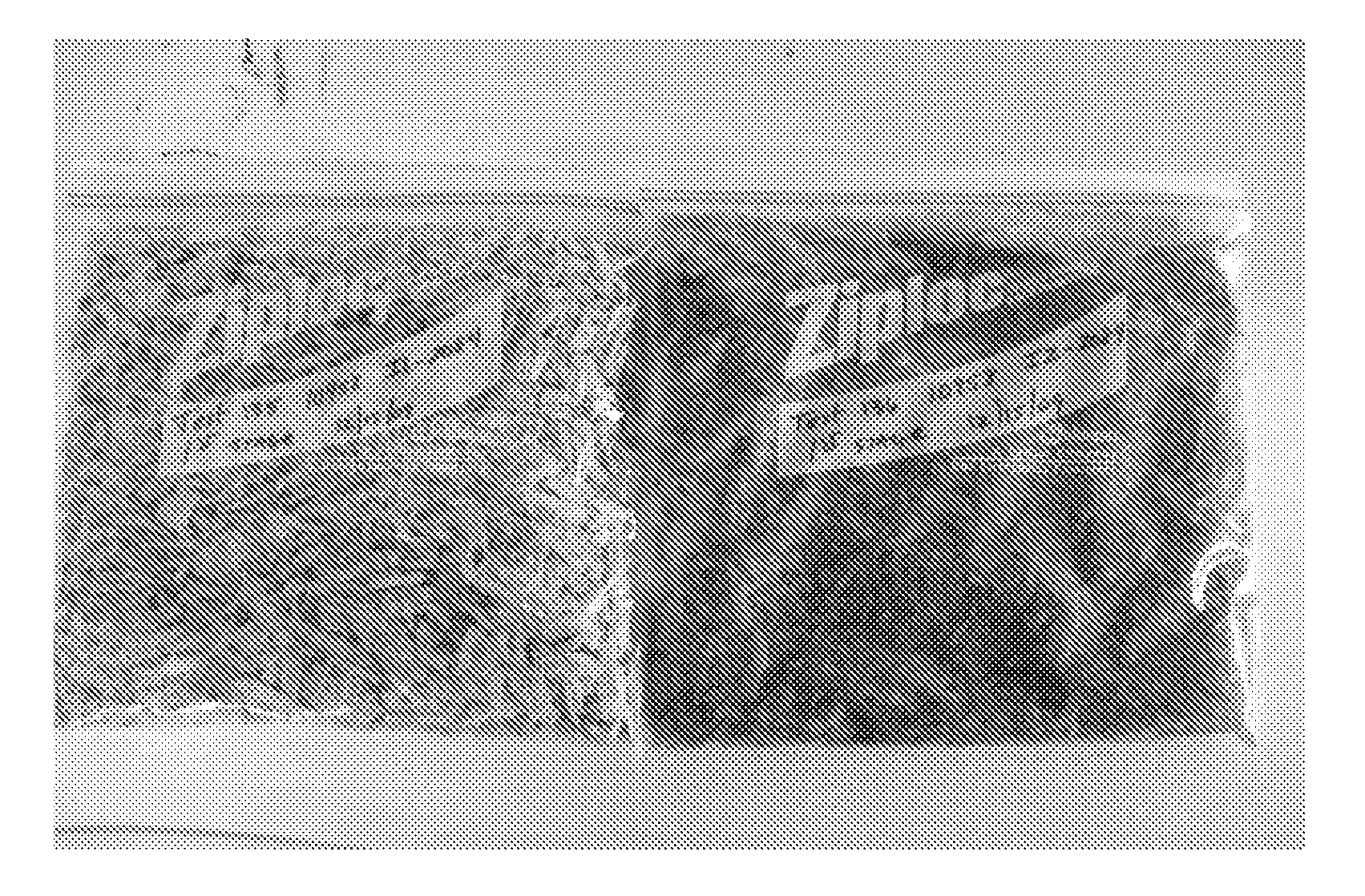Method for extracting soluble sugar molecules from biomass material
a biomass material and soluble sugar technology, applied in the field of biomass material extraction methods, can solve the problems of limiting the access of a catalyst, such as acid, to the polymeric carbohydrate substrate molecules, and hindering the hydrolysis of biomass materials, so as to increase the amount of extractives removed, the degree of disintegration, and the effect of depolymerization reaction
- Summary
- Abstract
- Description
- Claims
- Application Information
AI Technical Summary
Benefits of technology
Problems solved by technology
Method used
Image
Examples
example 1
[0157]Grey stage Lodgepole pine chips, moisture content approximately 24.9%, were screened for debris and passed through a thermomechanical disintegrator in order to ensure (1) adequate acid impregnation throughout the chip for the liberation of hemicellulosic sugars, and (2) to remove some wood extractives.
[0158]The disintegrator was a Bauer / Andritz RT Impressifiner, used under the following conditions. Some dilution water was added to saturate the wood chips, steam was added at a delivery pressure of 1.38 bar, residence time was 20 seconds, and the flow restriction at the exit of the RT Impressifiner was set to 1 inch.
[0159]A sample of the preliminary pressate was collected. 1.42% (w / w) nitric acid was added to the solid material at the exit of the RT Impressifiner and resulted in a 32-37% (w / w) solids stream. The material was collected in drums, stored at about 10° C. for processing 12-18 hours later. The temperature of the material at the exit of the disintegrator was 60° C., an...
example 2
[0168]Grey stage Lodgepole pine chips, moisture content approximately 31.6%, were passed through a thermomechanical disintegrator, as described in Example 1 except that the wood chips were not screened for debris and the flow restriction at the exit of the disintegrator was 0.5 inch.
[0169]0.44% (w / w) nitric acid was added to the solid material at the exit of the RT Impressifiner and resulted in a 33.0% (w / w) solid discharge. The material was fed to a digestor as described in Example 1, with storage from 1 to 12 hours prior to processing. The digestor conditions were as described in Example 1, except the residence time was 360 seconds. No PSF pressate was retained in the process, but water was added to the rotary feeder (˜1.9 gpm) parallel to the PSF, the mechanical refiner (post digestor, between the digestor and the blow valve) (˜3 gpm), and the discharge cyclone, which is located post blow valve.
[0170]The resulting visible fiber quality was greater than in the product described in...
example 3
[0173]Clostridium was grown anaerobically in a packed bed bioreactor with 1 L nominal volume and 670 mL working volume. The L / D ratio of the bioreactor was 3.
[0174]The Clostridium was immobilized on bonechar. The bonechar particles had a size of 3000 to 5000 microns, with a bulk density of about 0.72 / ml. About 1.5 pounds of bonechar was loaded into the reactor. Immobilization was achieved by first filling the reactor with about 670 mL of CP3 media with 6% w / v softwood sugars synthetic mix (20.04% w / w D-glucose, 31.32% w / w D-xylose, 12.88% w / w L-arabinose, 35.76% w / w D-mannose) and then adding to the reactor 60 mL of Clostridium broth that had an OD at 600 nm of about 0.8, and recirculating the contents of the reactor for 24 hours.
[0175]The initial growth medium as well as the medium used during the continuous part of the fermentation, contained conditioned beetle killed lodgepole pine acid hydrolysate with about 45 g / L sugar, supplemented with P2 medium components and trace elements...
PUM
| Property | Measurement | Unit |
|---|---|---|
| length | aaaaa | aaaaa |
| temperature | aaaaa | aaaaa |
| pressure | aaaaa | aaaaa |
Abstract
Description
Claims
Application Information
 Login to View More
Login to View More - R&D
- Intellectual Property
- Life Sciences
- Materials
- Tech Scout
- Unparalleled Data Quality
- Higher Quality Content
- 60% Fewer Hallucinations
Browse by: Latest US Patents, China's latest patents, Technical Efficacy Thesaurus, Application Domain, Technology Topic, Popular Technical Reports.
© 2025 PatSnap. All rights reserved.Legal|Privacy policy|Modern Slavery Act Transparency Statement|Sitemap|About US| Contact US: help@patsnap.com


